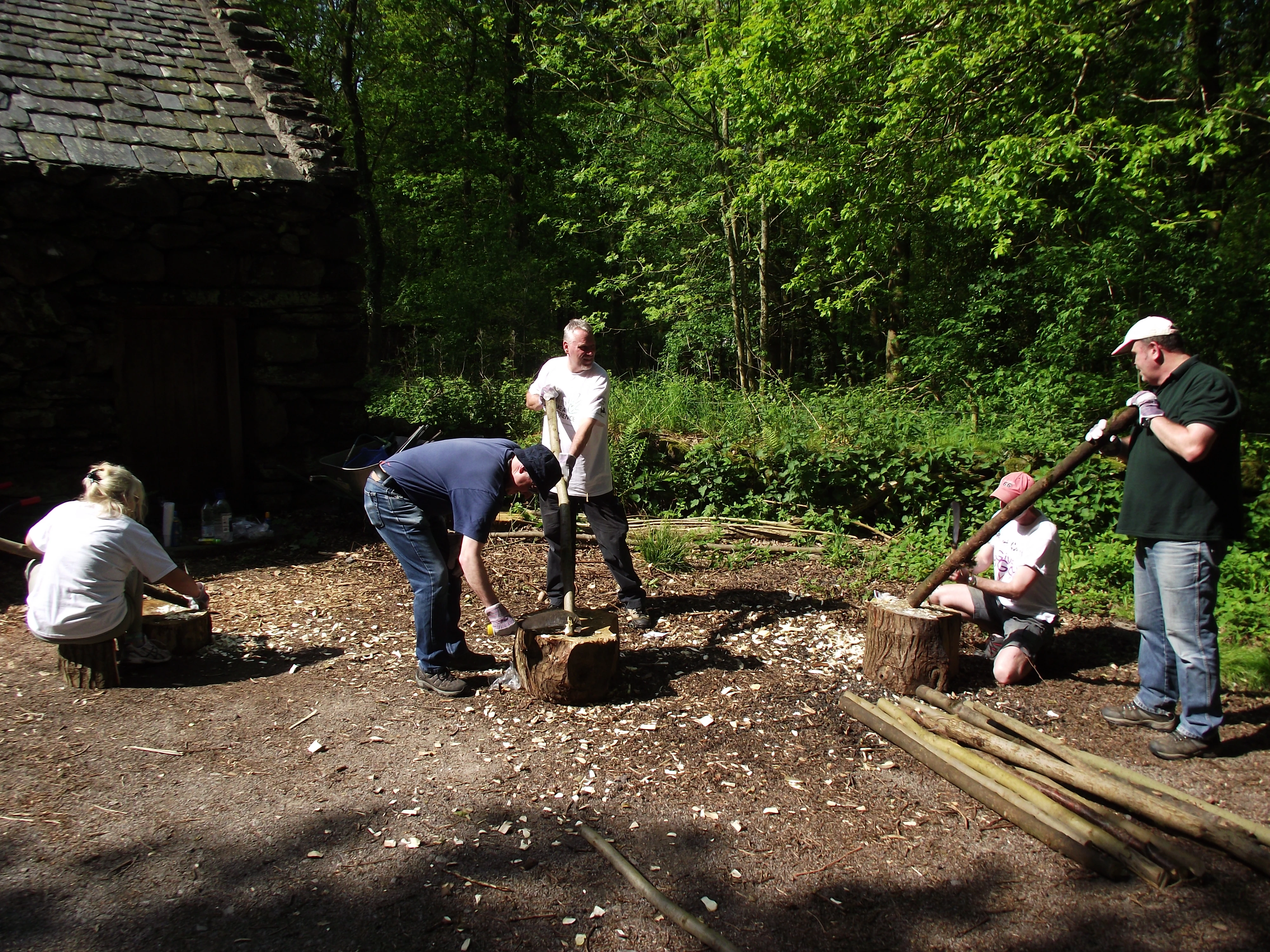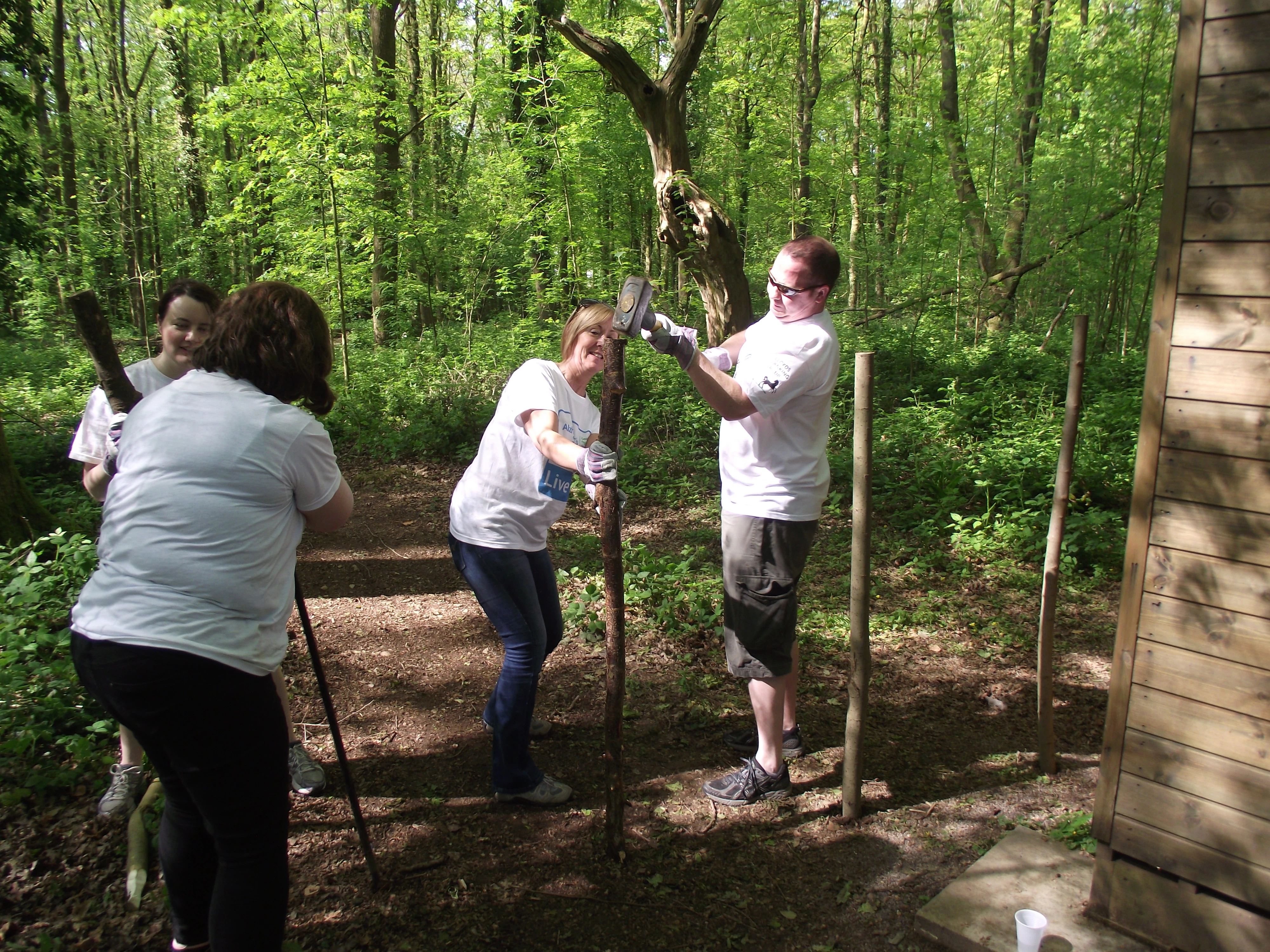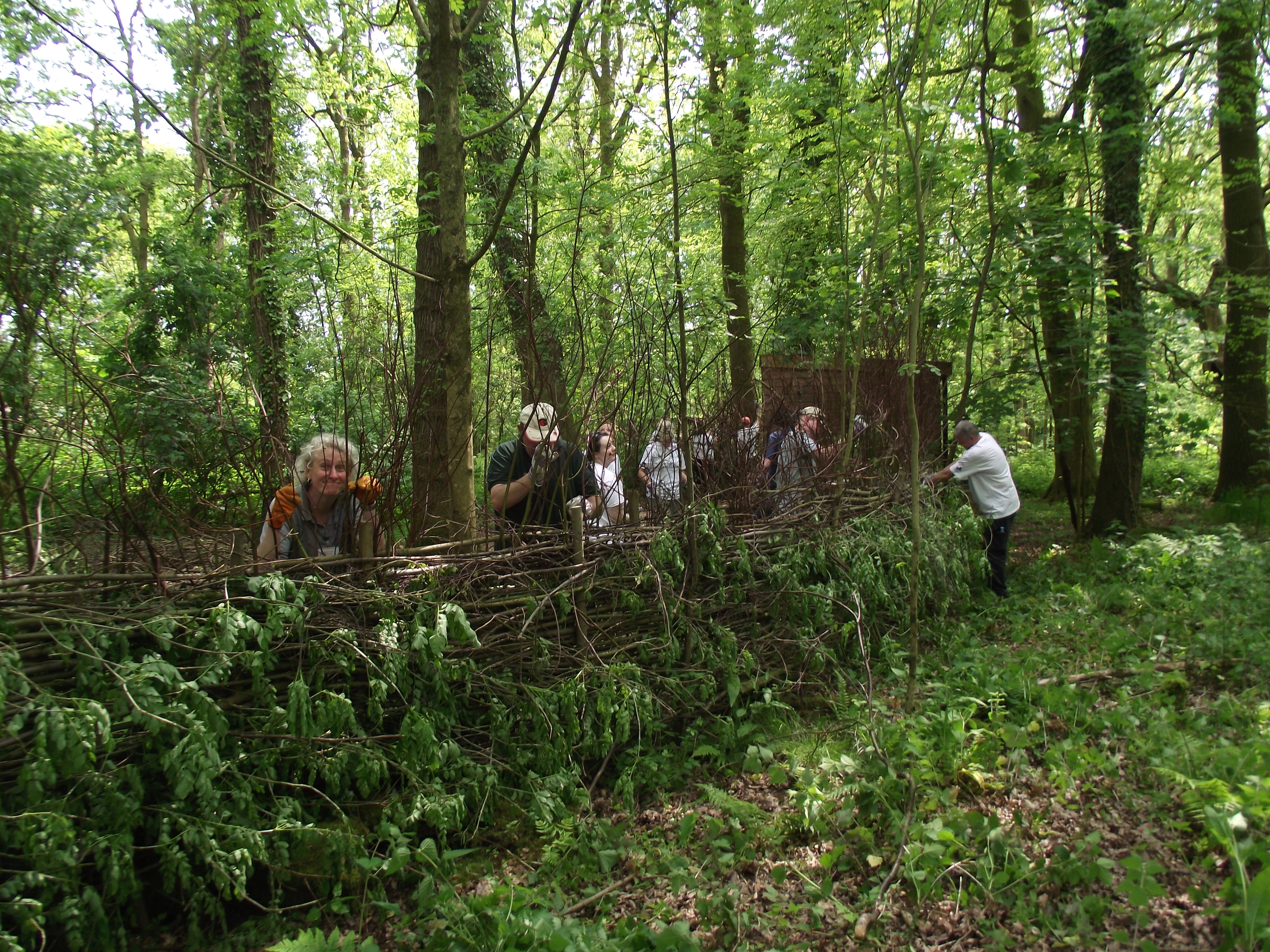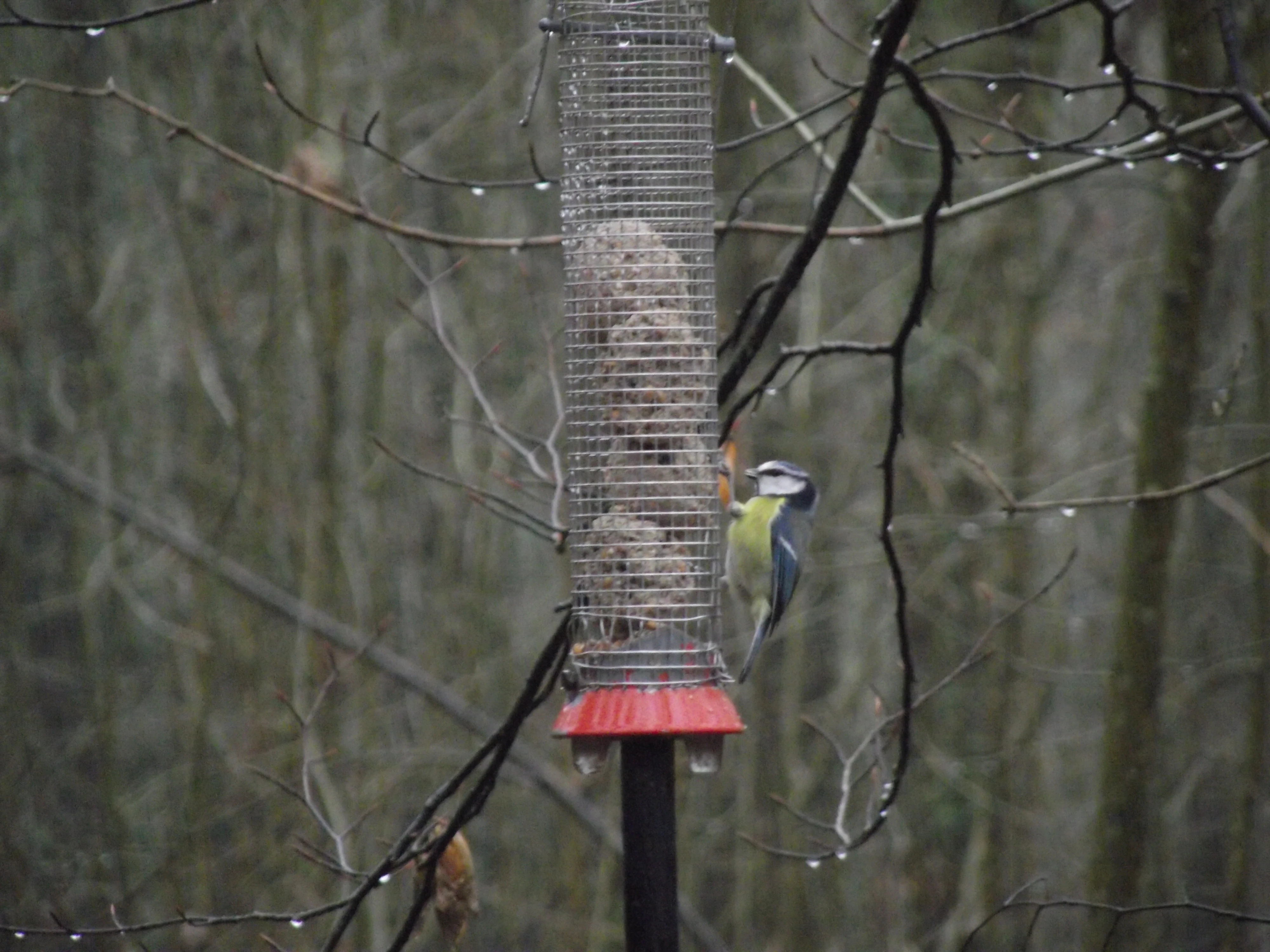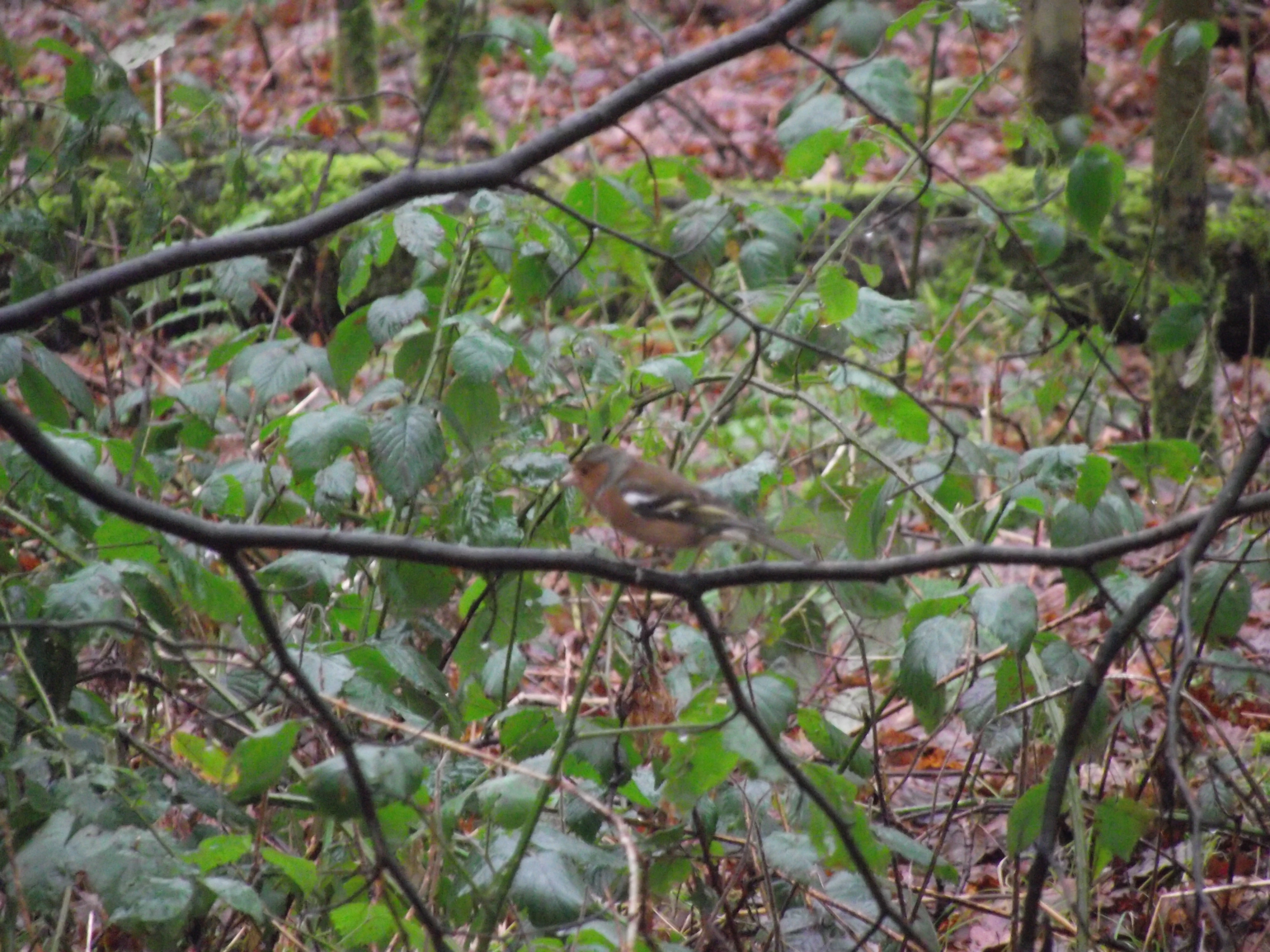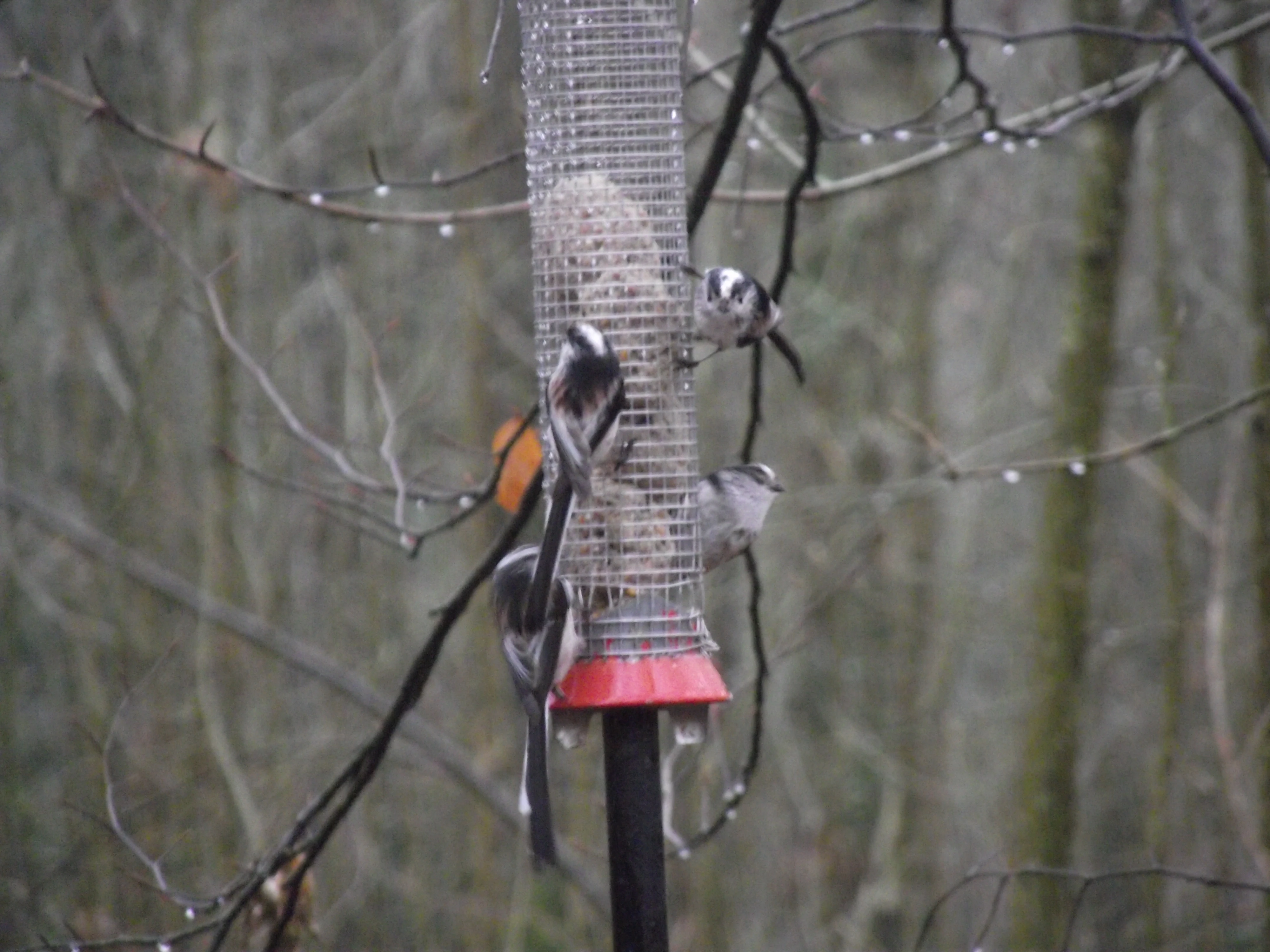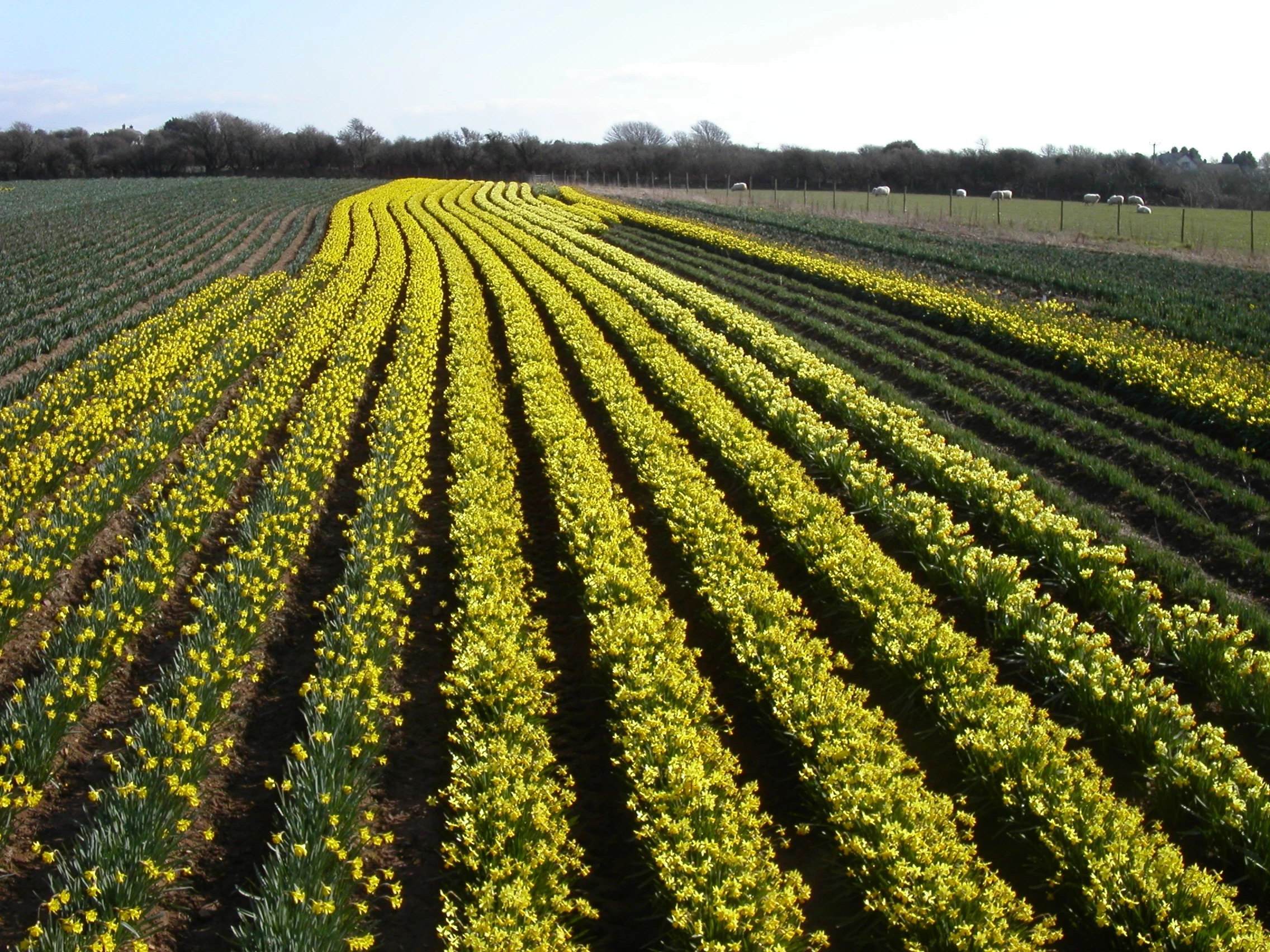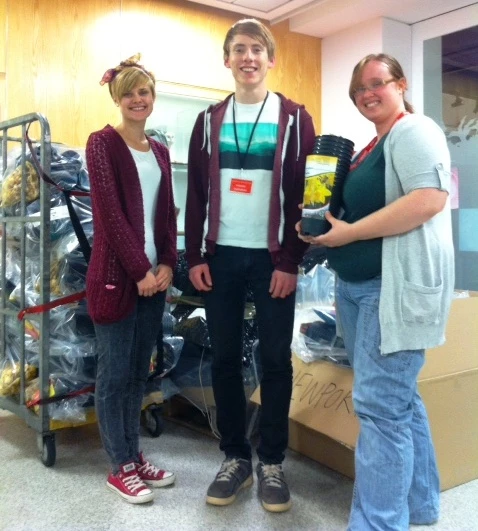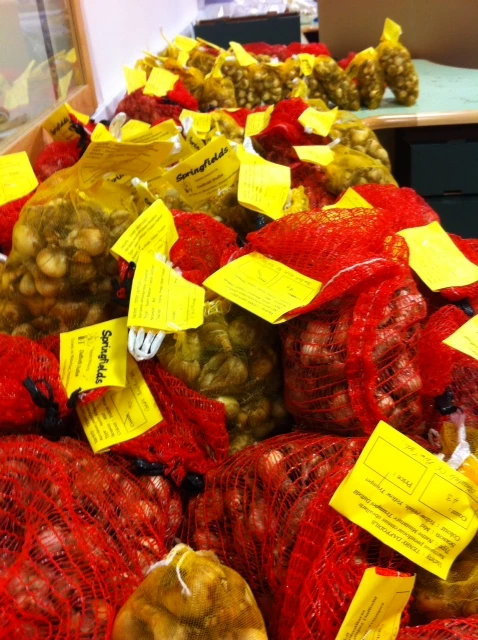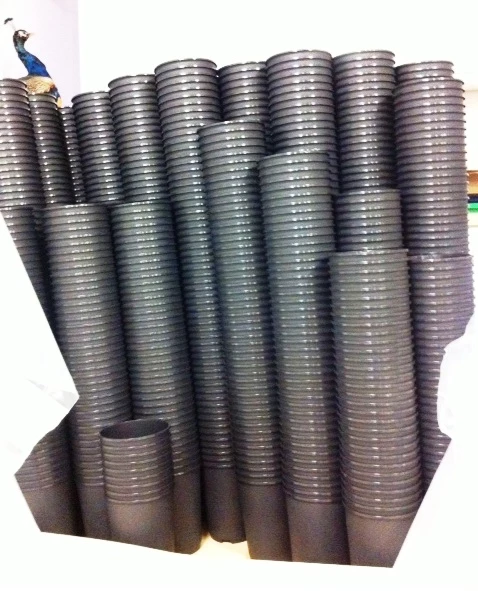Diwrnod Budd a Roi 2014
, 19 Mai 2014
Wythnos diwethaf, fel rhan o Ddiwrnod Budd a Roi 2014, daeth 50 o wirfoddolwyr o Lloyds Banking Group i Sain Ffagan i helpu gyda nifer o brosiectau. Wnaeth rai helpu’r Adran Garddio, wnaeth rai ymuno a’r Adran Adeiladau Hanesyddol tra gwnaeth rai gweithio ynghyd a’r Gymdeithas Alzheimer. Wnaeth 11 o’r gwirfoddolwyr gweithio gyda fi a Bernice i adeiladu gwrych newydd yn y goedwig wrth ymyl y guddfan adar.
Da ni di bod yn bwriadu adeiladu gwrych wrth ymyl y guddfan adar am sbel, am nifer o resymau. Yn gyntaf, bysai’r gwrych yn actio fel sgrin wrth nesai’r guddfan, gyda’r gobaith bysai’r adar ddim yn cael ei ofni gan ymwelwyr yn cerdded ar hyd y llwybr. Ma’ wrych hefyd yn gallu gweithio fel coridor wrth i fywyd gwyllt symud drwy’r goedwig. Hefyd, mae nifer o ymwelwyr wedi bod yn creu llwybr wrth dorri drwy’r goedwig, ac felly, wrth adeiladu gwrych, da ni’n gobeithio nawr bydd llai o ymwelwyr yn gwneud hyn.
Tasg cyna’r dydd oedd minio’r pyst. Mae’r pyst yn bwysig er mhoen neud yn siŵr bod y gwrych yn cael ei adeiladu ar sylfaen solet. Mae creu min yn neud e’n haws i yrru’r pyst mewn i’r ddaear. Ar ôl creu tyllau arwain, defnyddiwyd morthwyl mawr i yrru’r pyst i lawr. Unwaith roedd y pyst yn ei le, roedd hi’n bosib i ni ddechrau adeiladu’r gwrych.
Ma’ na nifer o wahanol fathau o wrych, a phenderfynon ni ddefnyddio pren a choed wedi marw. Dros yr wythnosau diwethaf, dwi di fod yn gofyn i’r adrannau garddio ag amaethyddiaeth i gasglu unrhyw bren ac yn y blaen a’i anfon draw i’r guddfan adar. Am fod angen cymaint o bren, es i a rai o’r gwirfoddolwyr mewn i’r goedwig i gasglu hyd yn oed mwy.
Ar ôl cinio, fel grŵp, aethon ni i fyny i Fryn Eryr, safle’r ffarm Oes Haearn newydd sy’n cael ei adeiladu. Mae’r goedwig yma wedi cael ei chlirio yn ddiweddar, felly llanwyd trailer yn barod i’w cludo i’r guddfan. Erbyn diwedd y prynhawn, llwyddon ni i orffen y gwrychoedd. Gorffennwyd y gwrychoedd efo toriadau palalwyf er mwyn ychwanegu bach o je ne sais quois.
Fel mae’r lluniau yma’n dangos, mi oedd y diwrnod yn llwyddiant enfawr! Gallwn ni ddim di gofyn am dywydd gwell a dwi’n meddwl gwnaeth pawb mwynhau’r profiad. Gorffennwyd y 2 darn o wrych oeddem ni am adeiladu, a dwi eisoes wedi meddwl am brosiectau am y dyfodol! Cyflawnwyd llwyth o waith mewn un diwrnod, bysai’r gwaith di cymryd amser maeth i mi a Bernice i orffen heb help y gwirfoddolwyr. Diolch yn fawr iawn i bawb wnaeth helpu ni a’r prosiectau arall hefyd!
